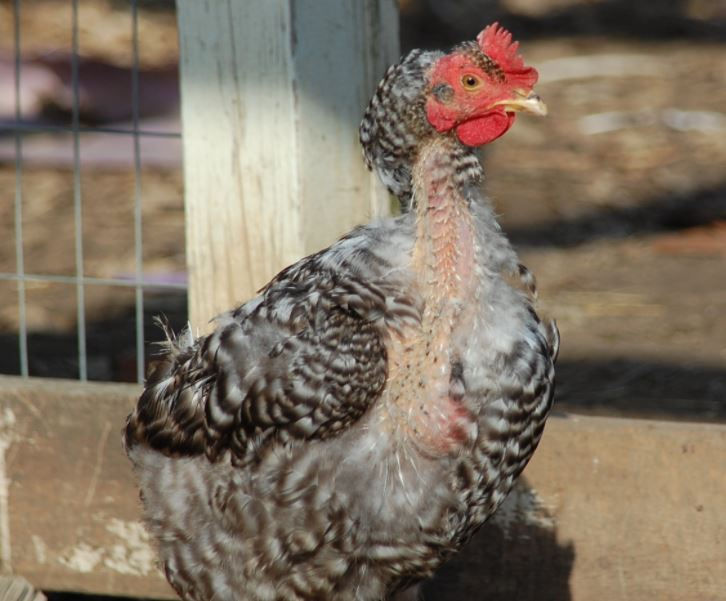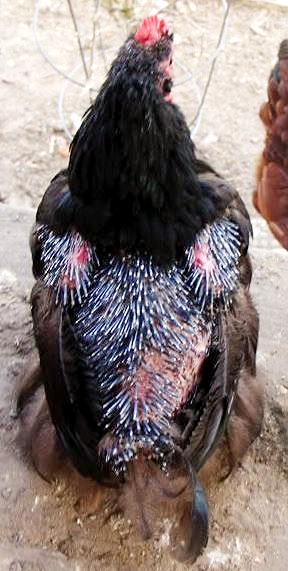Molt Season Again Means Feathers Everywhere!
- Todd Muse
- Oct 5, 2019
- 4 min read
Molting time for our chickens is upon us again, and that means a lot of moody and grouchy hens and roosters. And who can blame them? They’ve not only lost most of their beautiful feathers, and some are almost naked, but their body is craving extra protein during a time when they’re fewer bugs to catch and the grass is sparse. And they can be downright mean with each other. Their body language says, “Don’t touch me! “

Molting time is the loss of old feathers that will be replaced by new feathers. You will know it’s molting season when there’s an overabundance of loose feathers in your chicken coops and lots, you would swear someone had a pillow fight.
Another way you will know "the molt is on" is when some of the gals are looking a little naked or have a lot less feathers than normal. You may see a lot more skin than you’re used to seeing, or worst yet, a completely naked chicken. It depends on how serious a molt your girls and boys are having.

We have breeder flocks and while going through a molt the roosters can wreak havoc on the girls back. If you breed your hens and you begin to see naked backs, do your girls a favor and take the rooster out for a while. Once a hen has been fertilized by the rooster, the eggs they lay will be fertilized for up to 2 weeks after being with a rooster. A little time apart can only help with the stress of the molt. They will be happier to see each other after they begin to heal.
The pin feathers are very sensitive during the molt and can cause your chickens pain if being touched. It is worth noting that the pin feathers can bleed profusely if broken during this time, because the tissue within the follicle of an emerging feather contains a rich supply of blood. You can generally spot an injured shaft by the presence of blood.

The molt, as well as egg production, are a response to the amount of light your hens are exposed to. With less daylight hours during the fall of the year your hens will begin to lay fewer eggs and shed their feathers. Feathers are made up of 80-85 percent protein. A molting chicken's body simply cannot support both feather and egg production simultaneously.
There are some things we can do to help chickens get through a molt with a little less agony. First try to reduce their stress level as much as possible. Try not to change anything in their routine, such as introducing new members, or moving them to a different location, or rearranging their coops.
An increase in protein will not only help with the molt but also with egg production since most of the protein needed for egg laying is being diverted to feather growth. The easiest way to increase their protein is by feeding commercially prepared chicken feed containing 20 – 22% protein. We use game-bird feed during this time. Simply mix the higher protein with the layer a little at a time until it fully replaces the layer feed. Once their feathers return, go in reverse to get them back on layer feed. It’s an easy way to help your girls feel themselves again and possibly lay a few eggs again before the winter fully sets in.
Try not to handle your birds any more than is necessary. Give them treats such as black oil sunflower seeds, tuna fish, meal worms, cooked eggs, or dry cat food. Do not over feed on the treats. No more than 5% of a hen’s diet should consist of treats. Use caution when adding extra protein, which if too much is given can cause health issues such as: diarrhea, joint problems, and an increase in urine. As should everything be in life, keep it balanced.
Chickens will molt every year when the daylight hours shorten. Some begin early in the season and some as late as spring. It depends on their environment and the breed, but no one escapes the molt. Usually a chicken's first major molt occurs when they are between 16 – 18 months of age. Most molt between 7 to 8 weeks from start to finish. But some will only molt 4 weeks and some up to 12 weeks or more.
There are other reasons why a hen will molt. If your hens have health problems such as worms or external parasites, lack of food or water or a sudden change in lighting, these can trigger a molt. A broody hen will usually molt due to the time it takes to hatch out their chicks all the while doing without food, water, and sunlight.
There are other molts that precede the yearly molt. The first mini molt begins at one-week old until it is 4 weeks old, and the chick’s down is replaced by it first feathers. Then comes the juvenile molt which is the second mini molt that occurs between 7 to 12 weeks old and it first feathers are replaced by its second feathers.
The molt is a natural process and even though they may be a little uncomfortable, they will emerge beautiful. After the process is over you will find hens that seems young and healthy. Her feathers are glossy and full and she's gorgeous again! Lucky things. If only we could get new skin once a year. Wouldn't that be nice?



_JPG.jpg)
